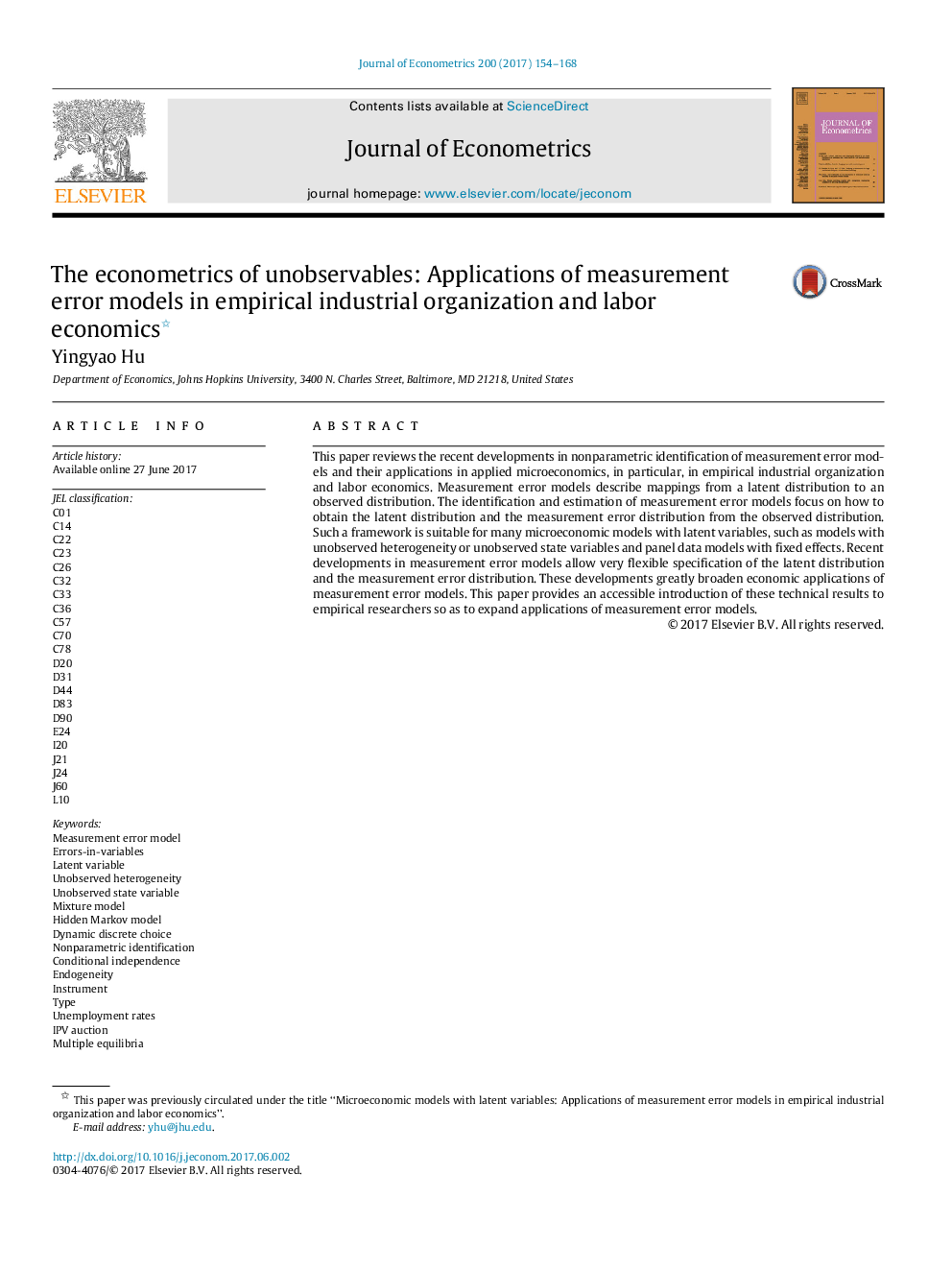| Article ID | Journal | Published Year | Pages | File Type |
|---|---|---|---|---|
| 5095441 | Journal of Econometrics | 2017 | 15 Pages |
Abstract
This paper reviews the recent developments in nonparametric identification of measurement error models and their applications in applied microeconomics, in particular, in empirical industrial organization and labor economics. Measurement error models describe mappings from a latent distribution to an observed distribution. The identification and estimation of measurement error models focus on how to obtain the latent distribution and the measurement error distribution from the observed distribution. Such a framework is suitable for many microeconomic models with latent variables, such as models with unobserved heterogeneity or unobserved state variables and panel data models with fixed effects. Recent developments in measurement error models allow very flexible specification of the latent distribution and the measurement error distribution. These developments greatly broaden economic applications of measurement error models. This paper provides an accessible introduction of these technical results to empirical researchers so as to expand applications of measurement error models.
Keywords
D31C32C26L10J24I20C57C01C70D83E24J21C22D90C78C14J60D44C36C33C23d20InstrumentFixed effectsConditional independenceBeliefDynamic discrete choiceEndogeneityTypeMatchingmultiple equilibriaErrors-in-variablesincome dynamicsNonparametric identificationlatent variableMeasurement error modelPanel data modelMixture modelHidden Markov modellearning modelUnobserved heterogeneityUnemployment rates
Related Topics
Physical Sciences and Engineering
Mathematics
Statistics and Probability
Authors
Yingyao Hu,
